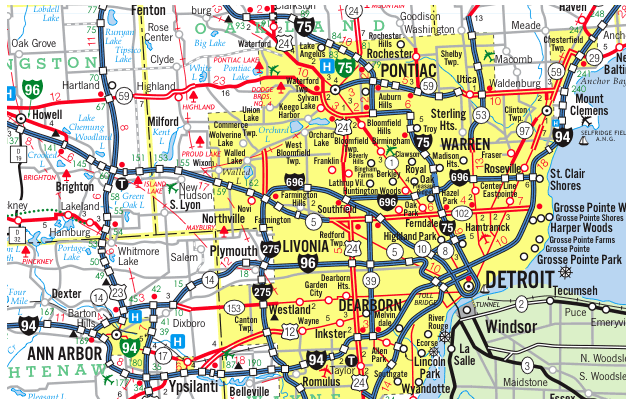Screw Spacing for 1/2″ Drywall Installation: What Michigan Building Code Requires
When installing drywall, following proper screw spacing is essential not only for structural integrity and finish quality, but also to remain compliant with building codes. In Michigan, which follows the International Residential Code (IRC) with some state-specific amendments, drywall fastener spacing depends primarily on two factors: the thickness of the drywall and the stud spacing in your wall or ceiling.
Standard Screw Spacing for 1/2″ Drywall
The most common drywall thickness for interior walls and ceilings is 1/2 inch. Here’s what the code specifies for screw spacing based on stud spacing:
🔩 Stud Spacing: 16 Inches On-Center (O.C.)
Walls:
-
Screws should be spaced a maximum of 12 inches apart on walls.
-
Perimeter edges (edges parallel to the framing) should also follow this 12″ spacing.
-
If using nails, spacing may be reduced to 7 inches to maintain equivalent holding strength.
Ceilings:
-
When studs or joists are spaced 16″ O.C., screws may be spaced 12 inches apart.
-
If using adhesive in addition to mechanical fasteners (a “glued and screwed” method), screw spacing can be increased to 16 inches, per IRC Table R702.3.5.
🔩 Stud Spacing: 24 Inches On-Center (O.C.)
Walls:
-
Screws should be spaced a maximum of 12 inches apart, same as for 16″ O.C. spacing.
-
However, for better rigidity and to avoid sagging or bowing, using 5/8″ Type X drywall is often recommended at this stud spacing, especially for ceilings.
Ceilings:
-
When joists are spaced 24″ O.C., the IRC requires 5/8″ Type X drywall for ceiling applications unless special framing techniques are used.
-
If 1/2″ drywall is used on ceilings with 24″ spacing, screw spacing must be no more than 12 inches, and the use of adhesive is strongly recommended.
✅ Code Reference:
The 2021 Michigan Residential Code (based on the 2021 IRC) includes these guidelines in Section R702 – Interior Covering and specifically in Table R702.3.5 for fastener spacing. Builders should also consult local amendments or inspectors for the latest requirements, as local jurisdictions may have variations or stricter interpretations.
💡 Best Practices for Installers
-
Always start fastening drywall at the center and work out to the edges to minimize bowing.
-
Use corrosion-resistant drywall screws with a bugle head.
-
Avoid overdriving screws, which can break the paper surface and reduce holding strength.
-
When in doubt, check with your local code official.
In Summary:
| Stud Spacing | Wall Screw Spacing | Ceiling Screw Spacing | Drywall Type Recommended |
|---|---|---|---|
| 16″ O.C. | 12″ | 12″ (16″ if glued) | 1/2″ OK |
| 24″ O.C. | 12″ | 12″ (glue recommended) | 5/8″ Type X Preferred |
Understanding and following proper screw spacing helps ensure a strong, crack-resistant drywall installation and keeps your build up to code in Michigan.




 Our Construction company is Servicing Southeast Michigan, Detroit and the Tri-County area Wyane, Oakland and Macomb;
Our Construction company is Servicing Southeast Michigan, Detroit and the Tri-County area Wyane, Oakland and Macomb;
